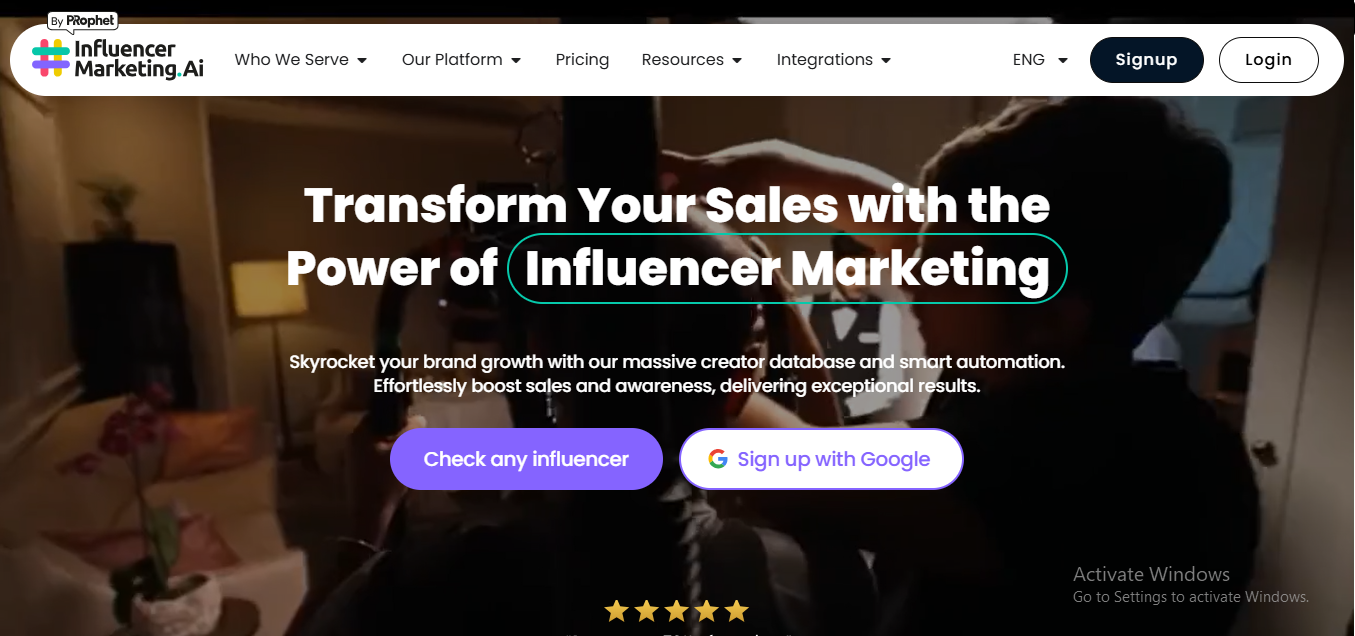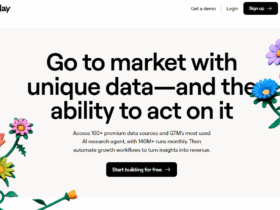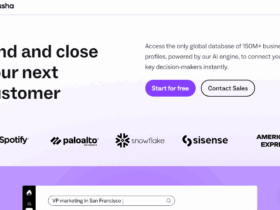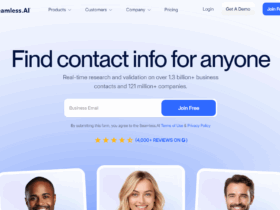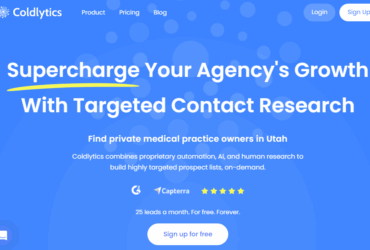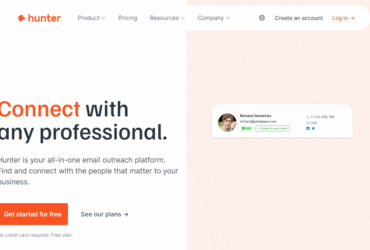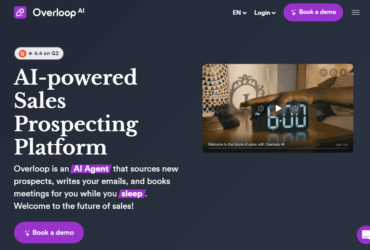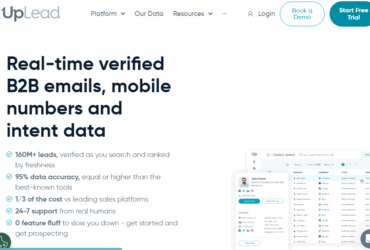Hey there! So, you’re looking for the best influencer marketing platforms for 2025? Whether you’re an influencer, brand, or marketing enthusiast, I’ve got you covered! I’ve dived into a bunch of platforms, and I’m going to give you the lowdown on the top 29 influencer marketing alternatives. We’re talking about key features, pros and cons, pricing, and how these tools actually work. I’ll keep it chill and fun because influencer marketing doesn’t have to be boring, right?
So, let’s dive into the good stuff!
1. Mavrck

Mavrck is like the powerhouse of influencer marketing platforms. If you’re a brand looking to supercharge your influencer game, Mavrck could be your new best friend.
Features I loved:
-
Powerful automation for influencer discovery and campaign management.
-
AI-powered influencer selection—this platform knows how to find the perfect match.
-
It can handle everything from micro-influencers to big names like the Kardashians.
What I didn’t love:
-
The learning curve can be a little steep for beginners (but once you get the hang of it, you’re golden).
-
The price tag. It’s on the higher end, so it’s more suited to bigger brands or agencies with a budget.
Pricing:
It’s a bit pricey, but worth it if you’re running serious campaigns. Expect custom pricing depending on the scope and scale of your needs.
Pros:
-
All-in-one influencer platform—no need for third-party tools.
-
Automated reporting and analytics.
-
Great for large-scale campaigns.
Cons:
-
A bit overwhelming for small businesses or first-time users.
-
On the expensive side for solo entrepreneurs.
2. The Influencer Room
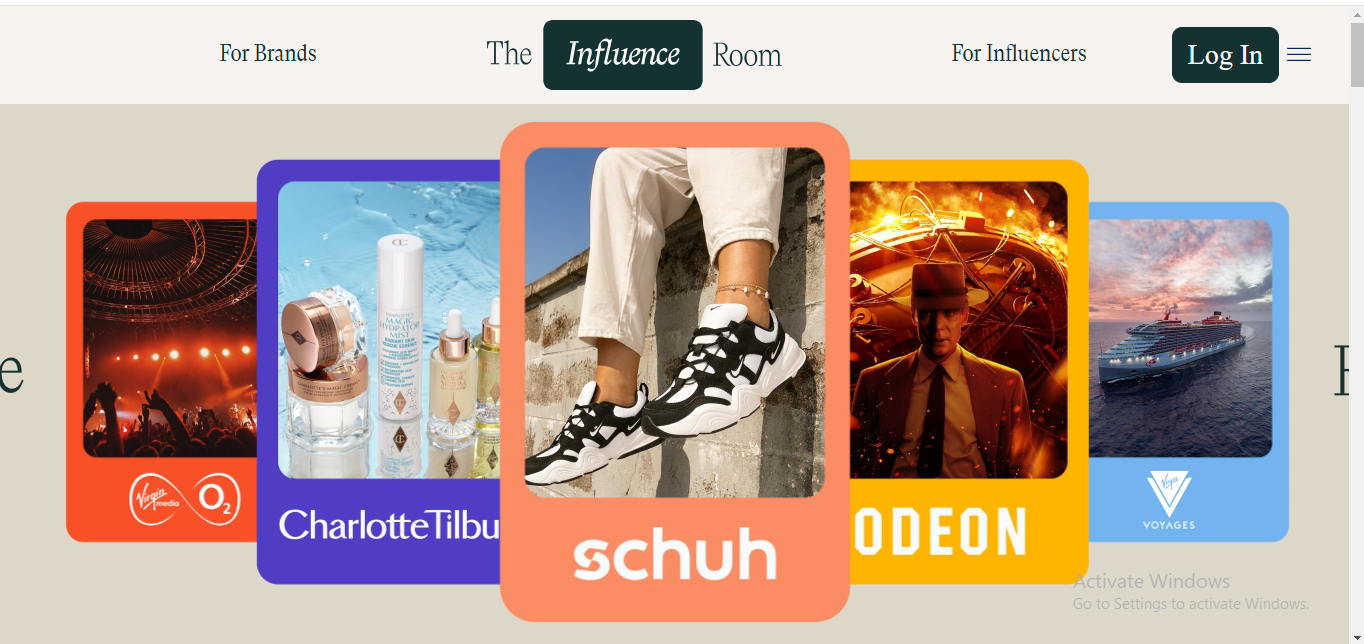
The Influencer Room is a solid alternative if you’re looking for a platform with a bit more flair.
Features I loved:
-
Super easy-to-use interface. If you’re a newbie, you’ll love how simple it is to navigate.
-
You can connect with influencers across multiple niches, so no matter what you’re selling, there’s someone for you.
-
Cool campaign management tools that help you track ROI in real-time.
What I didn’t love:
-
It’s still growing, so it’s not as feature-packed as Mavrck or Grin.
-
Limited analytics, which means you have to rely on external tools for deeper insights.
Pricing:
Mid-range. Pricing depends on your campaigns, but it’s affordable enough for small to mid-size businesses.
Pros:
-
Easy-to-use.
-
Flexible influencer selection.
-
Real-time tracking of ROI.
Cons:
-
Limited advanced features.
-
Still a work in progress.
3. Grin
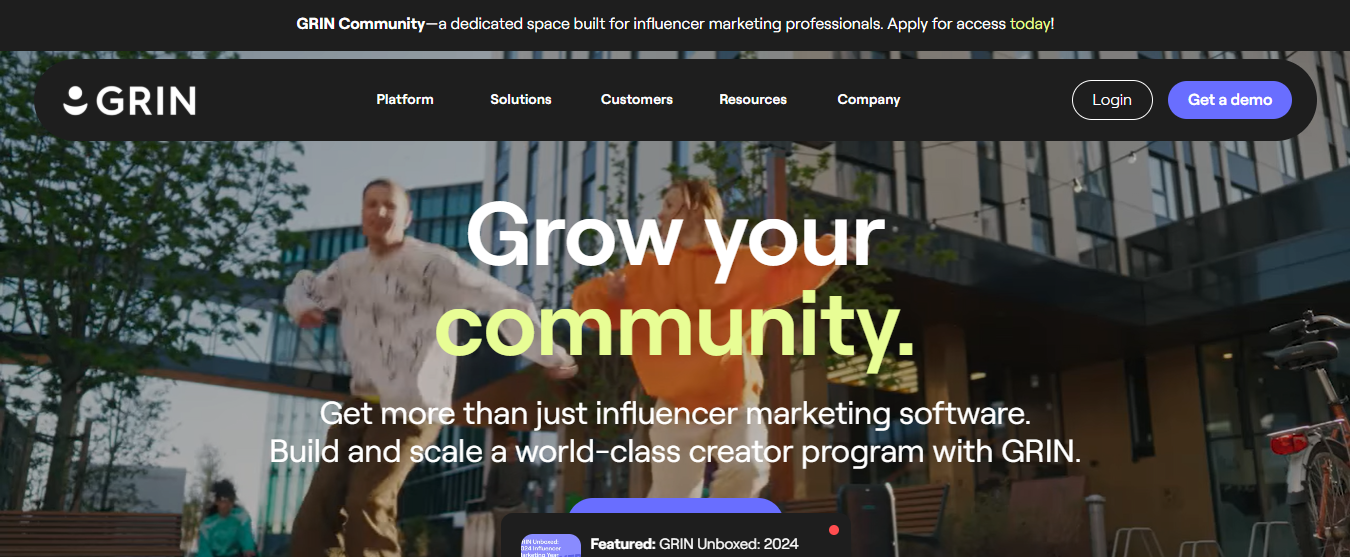
Grin is the ultimate influencer marketing platform for e-commerce brands. If you’re running an online store, this one’s a must-check.
Features I loved:
-
Integrates seamlessly with e-commerce platforms like Shopify and WooCommerce.
-
Influencer CRM helps you track your relationships with influencers.
-
Campaign management tools are spot-on, with automated content approvals.
What I didn’t love:
-
Not the best platform for non-e-commerce businesses.
-
Some users reported that it can be a bit tricky to integrate at first.
Pricing:
Grin is priced on the higher end, but it offers great value if you’re an e-commerce brand looking for high-level influencer marketing.
Pros:
-
Amazing for e-commerce.
-
Strong influencer CRM.
-
Automated content approvals.
Cons:
-
A bit too focused on e-commerce.
-
Integration can be time-consuming.
4. Influencity
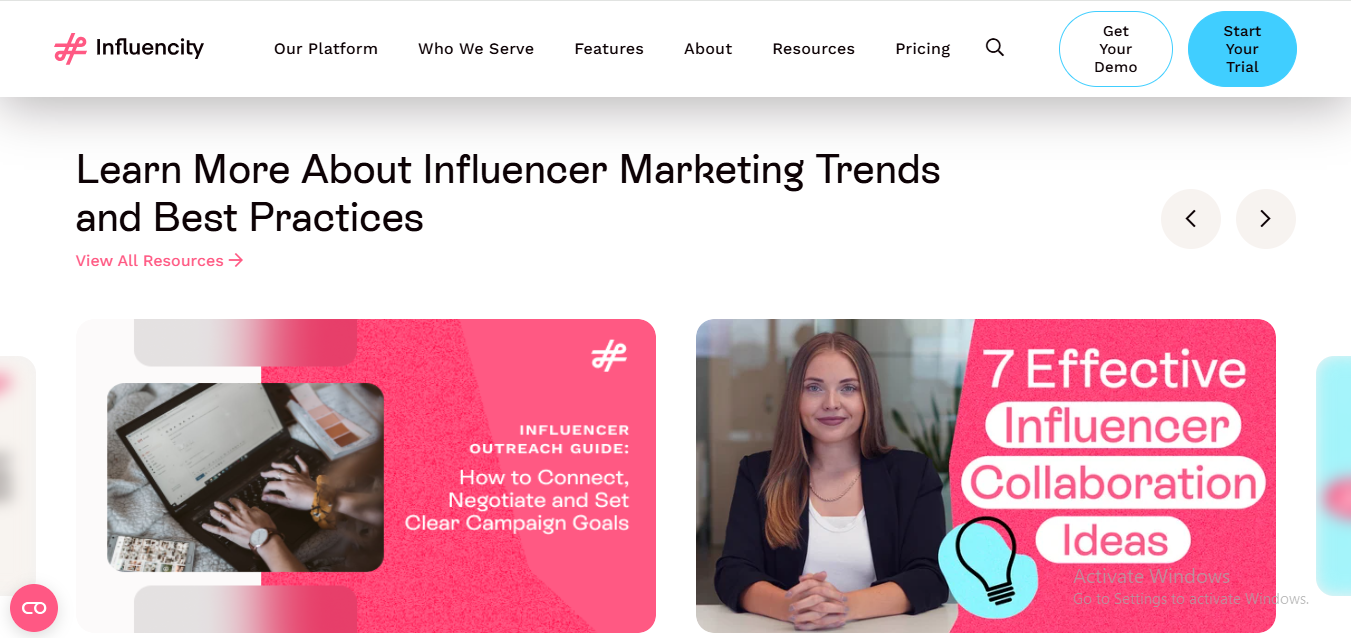
Influencity gives you all the tools you need to run influencer campaigns smoothly, and it’s especially good for tracking and reporting.
Features I loved:
-
Excellent influencer search tool—super precise and filters influencers by audience, engagement, etc.
-
Analytics that provide in-depth insights into campaign performance.
-
Lots of campaign types available—whether you want to run one-off collaborations or long-term partnerships.
What I didn’t love:
-
Some people find the interface a bit clunky.
-
More advanced features require an upgrade.
Pricing:
It’s pretty flexible with pricing depending on your campaign needs, but it’s mostly in the mid-range.
Pros:
-
Great for detailed campaign tracking.
-
Tons of influencer data at your fingertips.
-
Good for long-term campaigns.
Cons:
-
The interface can feel a bit dated.
-
Some features are locked behind higher pricing tiers.
5. Hashtag Paid

Hashtag Paid is a fan favorite for brands looking to get influencers with a strong social media following, especially in the lifestyle and beauty niches.
Features I loved:
-
Simple to use and beginner-friendly.
-
Focuses on transparent pricing (you know exactly what you’re getting).
-
It connects with influencers across various social media platforms—Instagram, TikTok, Twitter.
What I didn’t love:
-
The platform is a little more limited in terms of influencer management compared to some others.
-
Doesn’t have as many integrations with other platforms, which could be a dealbreaker for larger brands.
Pricing:
Pretty affordable! It’s perfect for smaller brands or those just starting to dip their toes into influencer marketing.
Pros:
-
Transparent pricing.
-
Great for smaller brands and newbies.
-
User-friendly.
Cons:
-
Limited influencer management tools.
-
Lacks integrations with other platforms.
6. Lolly
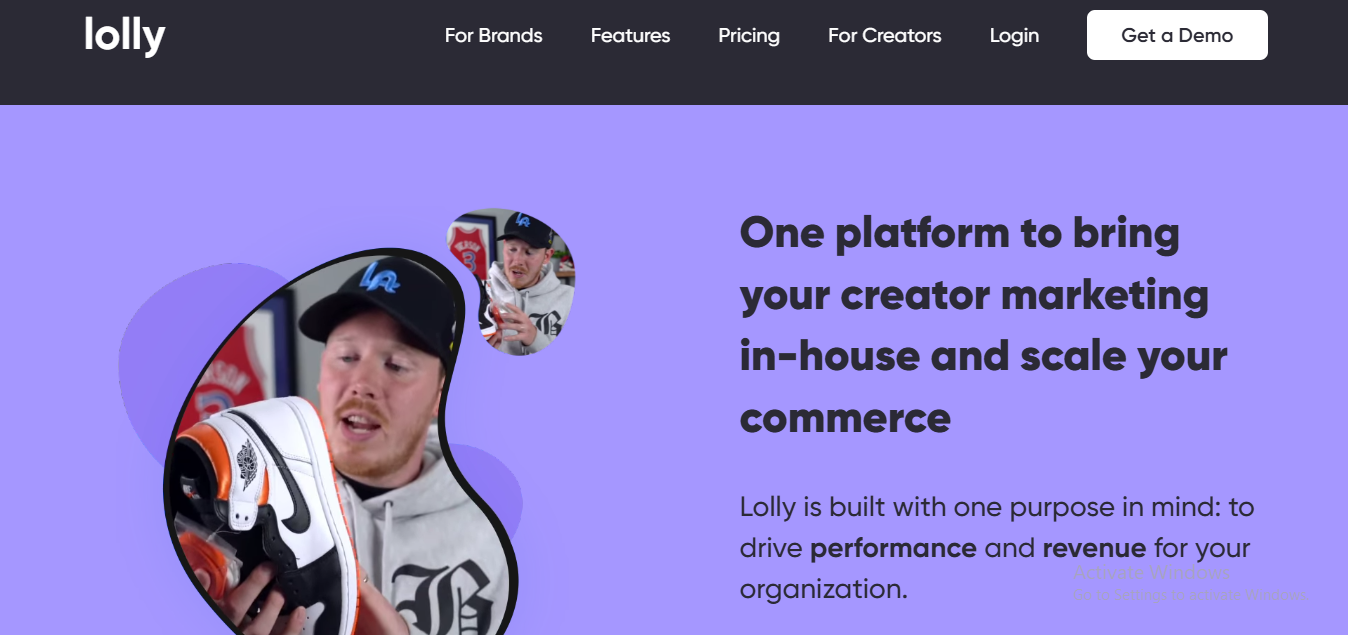
Lolly is a solid choice if you want a platform that puts an emphasis on content and community-building with influencers.
Features I loved:
-
Focuses on micro-influencers, which is awesome for brands looking to tap into specific communities.
-
Really good for managing long-term relationships with influencers.
-
Cool content-sharing features that help influencers create and distribute content easily.
What I didn’t love:
-
Not as robust for handling large-scale campaigns.
-
Some features, like advanced analytics, are locked behind higher pricing.
Pricing:
Lolly’s pricing is in the low to mid-range, so it’s a solid choice for small to medium-sized brands.
Pros:
-
Excellent for building influencer communities.
-
Focus on micro-influencers.
-
Content creation tools are top-notch.
Cons:
-
Limited scalability for larger campaigns.
-
Lacks some advanced features.
7. The Cirqle
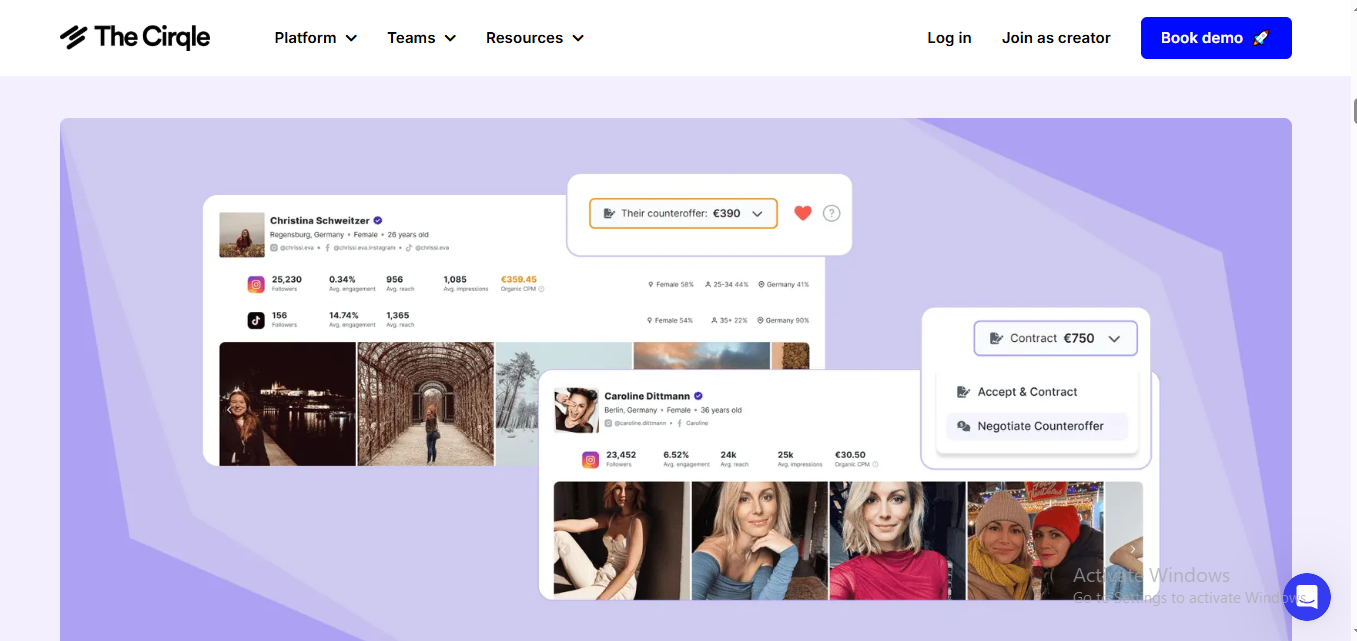
First up, The Cirqle. Think of this as the VIP section of influencer marketing. 🕴️ It’s sleek, it’s smooth, and it connects you with some of the coolest influencers in the game.
What I Loved:
-
Tons of influencer profiles to browse—you’re pretty much guaranteed to find the perfect match for your brand.
-
Their AI matching system is fire 🔥. It helps connect you with influencers who really vibe with your target audience.
-
Awesome dashboard to track your campaigns in real-time. Nothing’s worse than getting lost in analytics, but this one keeps it simple.
What I Didn’t Love:
-
If you’re a tiny business, the pricing can feel a bit like you’re paying for a private jet when you only need a car. 🚗
-
Sometimes it can take a little longer to get influencers onboard for campaigns.
Pricing:
On the higher end—good for mid to large businesses looking for a premium influencer experience.
Pros:
-
AI-driven influencer matching.
-
Slick interface.
-
Easy campaign tracking.
Cons:
-
Higher pricing.
-
Can take a little time to land influencers.
8. Popular Pays
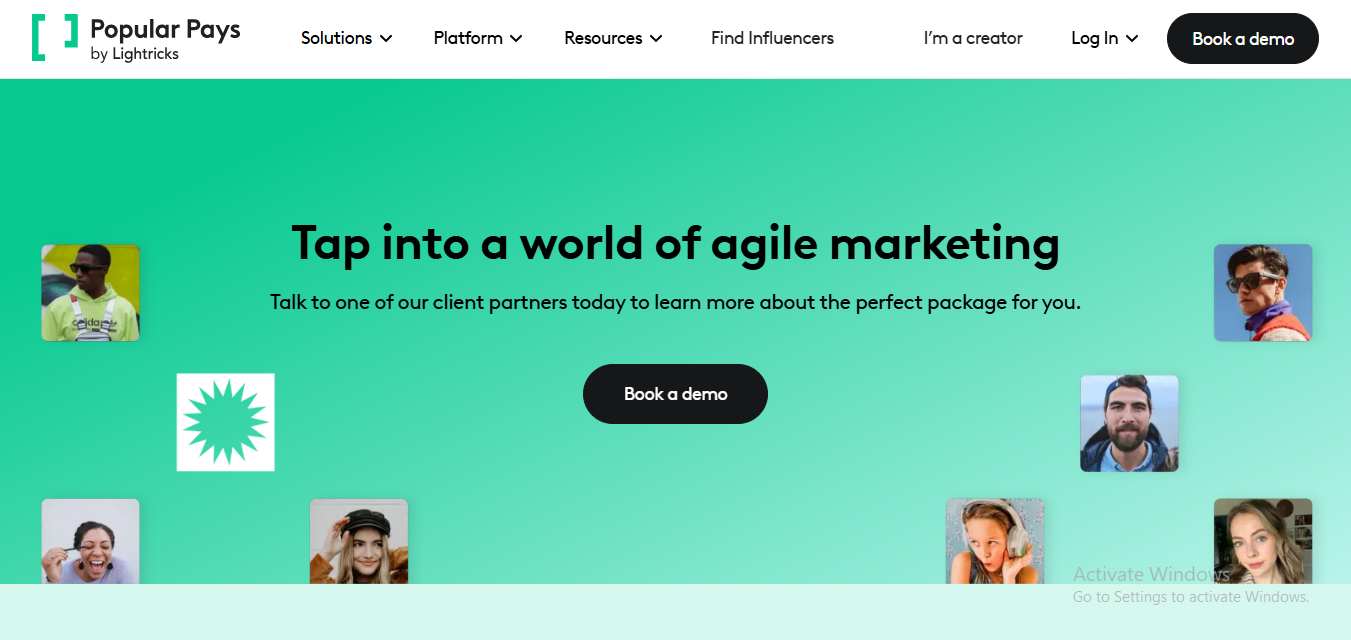
Next up, we’ve got Popular Pays. If you’re looking for a platform that lets you customize everything like a Netflix series, then this one’s for you.
What I Loved:
-
Customizable campaign options. Whether you’re looking for one-off posts or long-term partnerships, you can set it all up.
-
A solid mix of macro and micro-influencers. Want a big name? They’ve got it. Want someone a little more niche? They’ve got you too.
-
The ability to manage multiple campaigns at once without losing your mind.
What I Didn’t Love:
-
The platform can feel a little overwhelming at first with all the options and features.
-
The influencer search could use a little more refinement to help narrow down results faster.
Pricing:
Mid-range. It’s a great choice for brands that want flexibility without breaking the bank.
Pros:
-
Highly customizable.
-
Great influencer variety.
-
Campaign management is a breeze.
Cons:
-
Lots of features can be overwhelming.
-
Search process isn’t as quick as I’d like.
9. Collabstr
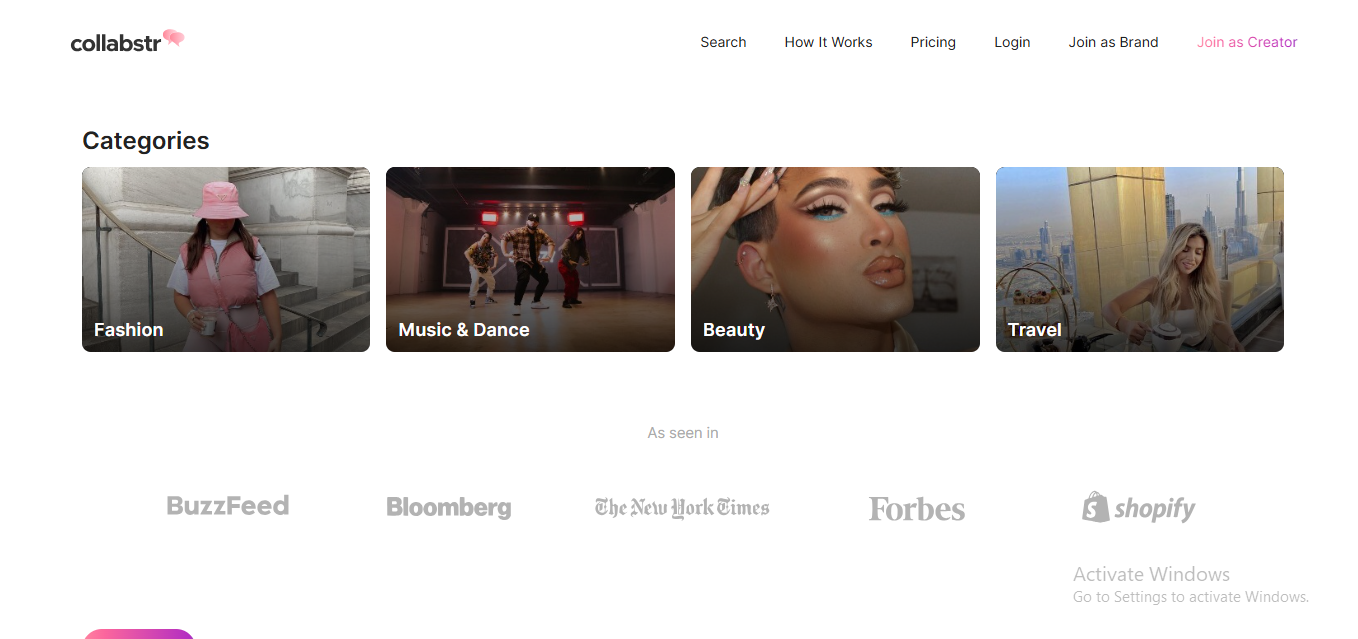
If you love simplicity and a no-fuss approach, Collabstr is your jam. It’s for brands who want to work with influencers without all the extra fluff.
What I Loved:
-
The platform is incredibly easy to use. Set up a campaign in minutes and start browsing influencers who fit your brand vibe.
-
Affordable pricing for smaller businesses or startups. 💸
-
You can connect with influencers across different platforms (Instagram, TikTok, YouTube). Easy peasy.
What I Didn’t Love:
-
Limited analytics compared to some of the bigger players like Captiv8.
-
Not as many high-tier influencers (so if you’re aiming for major celeb collabs, this might not be the one).
Pricing:
Super affordable! Perfect for small businesses and those just dipping their toes into influencer marketing.
Pros:
-
Simple setup and easy to navigate.
-
Budget-friendly.
-
Works across multiple platforms.
Cons:
-
Analytics are basic.
-
Less access to high-tier influencers.
10. Kolsquare

Kolsquare is like your influencer marketing Swiss army knife 🛠. It’s got everything from influencer discovery to campaign management and analytics.
What I Loved:
-
Super detailed influencer search. You can filter by location, niche, audience size—you name it.
-
Great reporting features. You’ll know exactly how your campaign is performing with metrics that matter.
-
Integration with multiple social platforms makes it super versatile.
What I Didn’t Love:
-
The learning curve can be a little steep, especially if you’re not super familiar with influencer marketing tools.
-
It’s more focused on mid to large businesses, so startups might find it a bit overkill.
Pricing:
It’s on the pricier side, but if you’re a larger brand or agency, it’s worth it.
Pros:
-
Advanced search features.
-
Excellent analytics.
-
Multi-platform integration.
Cons:
-
Steeper learning curve.
-
Best for mid-large businesses.
11. Captiv8

Captiv8 is a platform that aims to put you in touch with the best influencers—and they mean business. 😎
What I Loved:
-
Strong influencer discovery tools. You can find influencers based on location, demographics, and more.
-
Campaign management is pretty smooth—once you set things up, you can manage everything from one place.
-
Excellent analytics and reporting, which makes it easy to track your ROI.
What I Didn’t Love:
-
The price tag can be a bit heavy for small businesses or individuals just starting out.
-
Some users report that their customer service could be faster in responding.
Pricing:
On the expensive side, but if you’re serious about influencer marketing, it’s worth the investment.
Pros:
-
Powerful influencer search.
-
Detailed analytics.
-
Great for large campaigns.
Cons:
-
Pricey.
-
Customer support can be slow.
12. Aspire
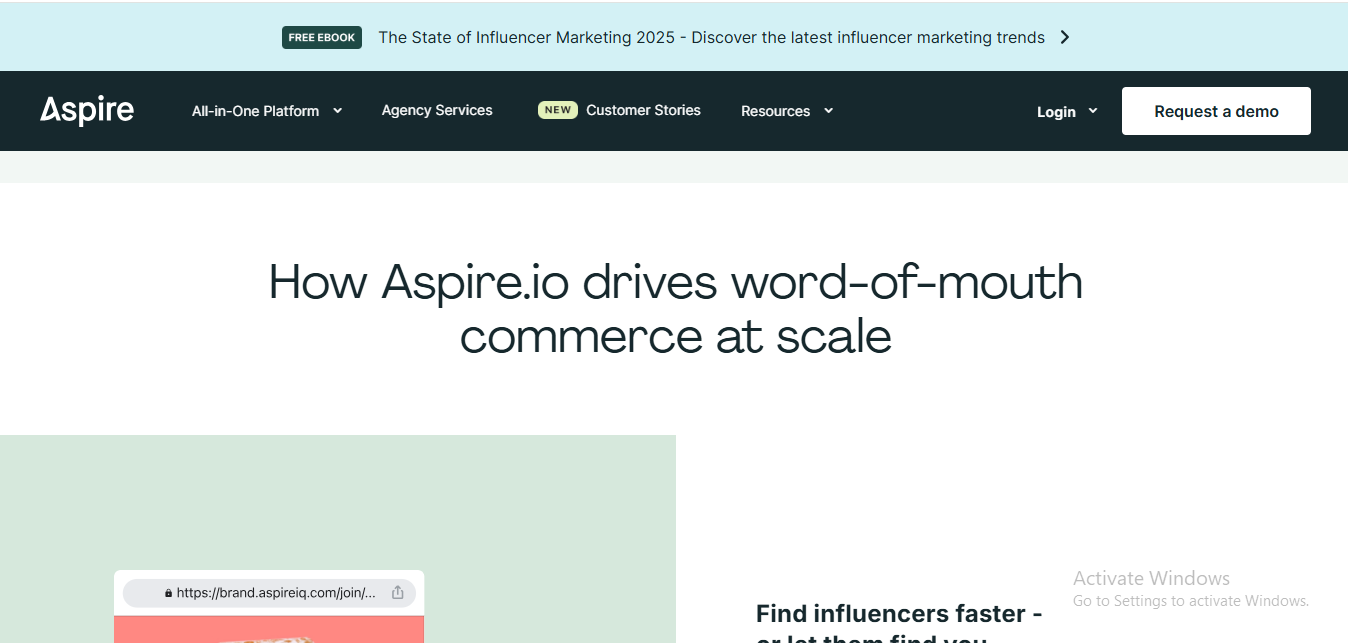
Aspire is like a backstage pass to influencer marketing heaven. It’s for brands that want to go big or go home.
What I Loved:
-
Deep influencer relationships. You can build long-term partnerships, which is great for sustainable growth.
-
Super easy-to-use interface. Whether you’re a newbie or pro, you’ll feel at home.
-
Automated campaign management makes life so much easier.
What I Didn’t Love:
-
It can get pricey, especially if you want access to all the bells and whistles.
-
Some influencers on the platform don’t engage as much, so you have to do a little digging.
Pricing:
Higher-end pricing, but definitely worthwhile for brands looking to run professional influencer campaigns.
Pros:
-
Great for long-term influencer partnerships.
-
Easy-to-use.
-
Automated tools that save time.
Cons:
-
Pricing can be steep.
-
Some influencer engagement issues.
13. Tribe Group
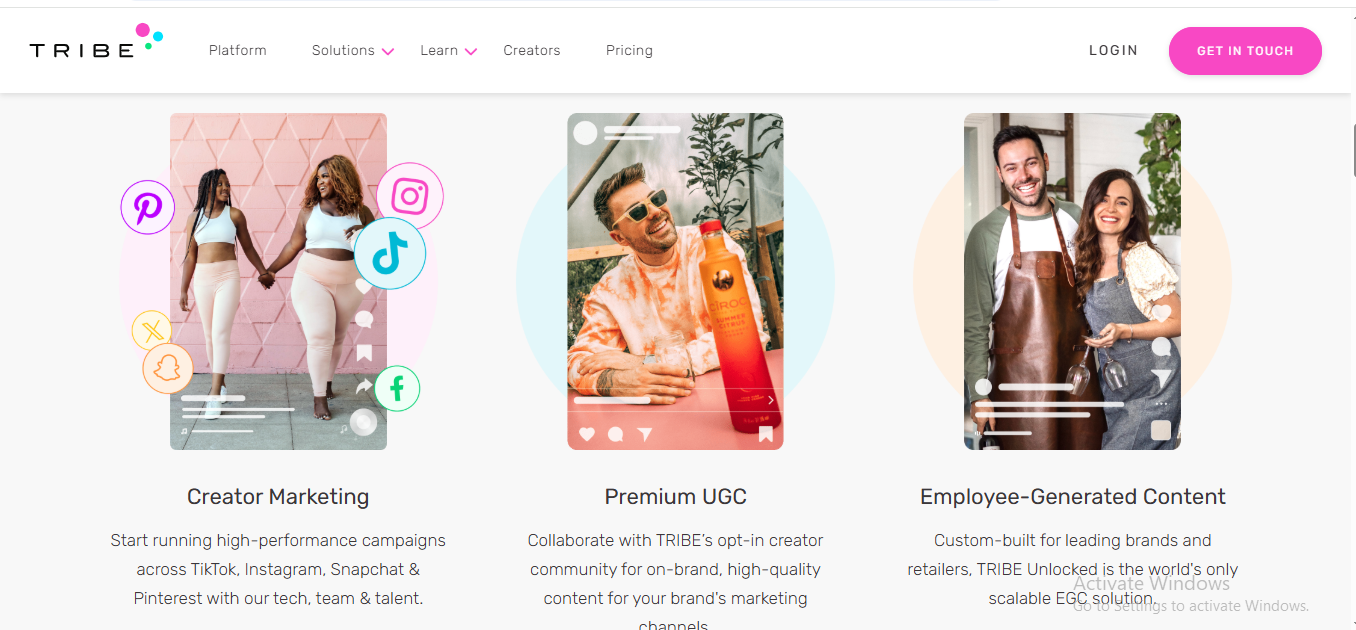
First off, Tribe Group is all about real connections and creative campaigns. If you’re after that “authentic” influencer vibe, this one’s a winner.
What I Loved:
-
It’s perfect for brands that want to run campaigns with micro-influencers. These influencers are super engaged, so you get more bang for your buck.
-
You can create campaigns quickly, and their platform’s easy to navigate.
-
Tribe’s a cool place to find creators who are genuinely passionate about niche topics—think beauty, fashion, fitness, etc.
What I Didn’t Love:
-
Sometimes the selection of influencers can be a bit limited if you’re looking for macro-influencers or celebs.
-
It’s not the best for large-scale campaigns with complex needs.
Pricing:
Fairly affordable for smaller businesses or startups looking to dip their toes into influencer marketing.
Pros:
-
Great for micro-influencers.
-
Simple platform to use.
-
Ideal for niche markets.
Cons:
-
Limited macro-influencers.
-
Not great for big, complex campaigns.
14. Braze
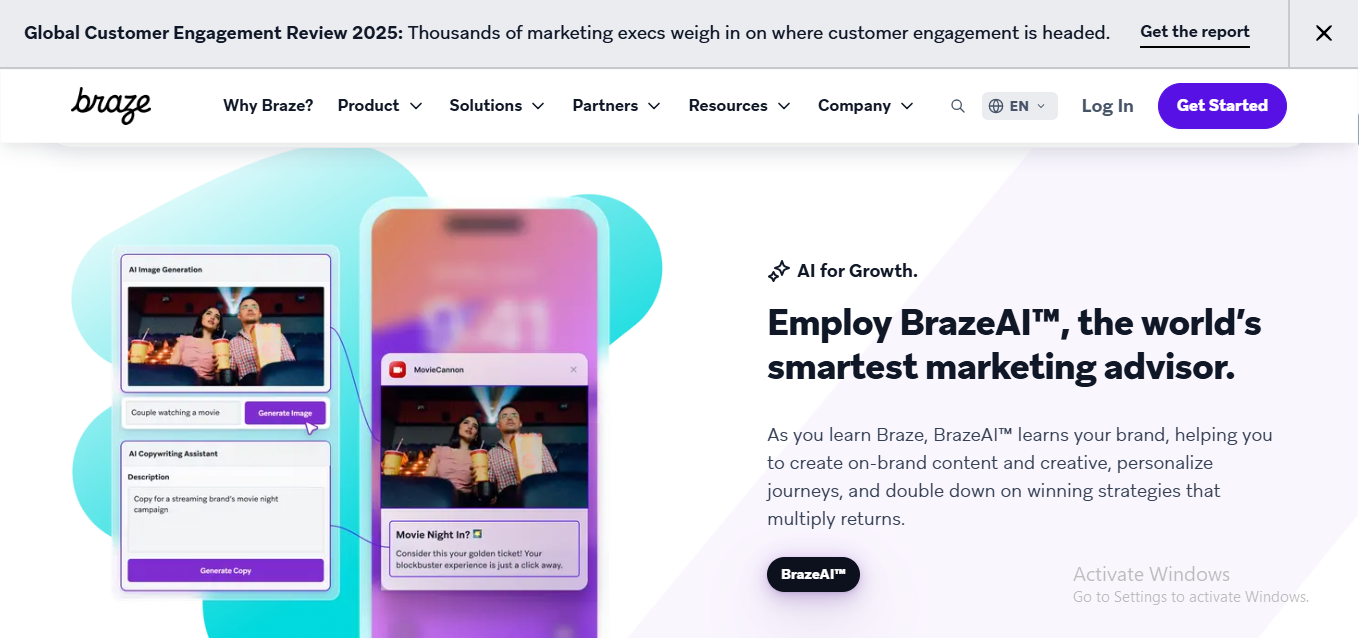
Now, Braze isn’t just an influencer marketing platform—it’s more of an all-in-one customer engagement tool. It’s like having a Swiss army knife for your marketing needs.
What I Loved:
-
Super powerful customer data and analytics. You can segment your audience, track behavior, and run personalized campaigns. It’s like having a crystal ball for your marketing strategy.
-
Works really well if you’re running an omnichannel marketing strategy. Braze helps you sync up your campaigns across email, push notifications, and in-app messaging with ease.
What I Didn’t Love:
-
It’s on the pricier side, so if you’re a small business, it might feel like you’re paying for a luxury ride when you only need a scooter.
-
It’s not super influencer-focused—it’s more about customer engagement and lifecycle marketing.
Pricing:
High-end pricing, but if you’ve got the budget and want to go all-in on omnichannel marketing, it’s a solid pick.
Pros:
-
Amazing analytics and segmentation.
-
Great for omnichannel strategies.
-
Personalized campaigns.
Cons:
-
Expensive.
-
More focused on customer engagement than influencers.
15. IZEA
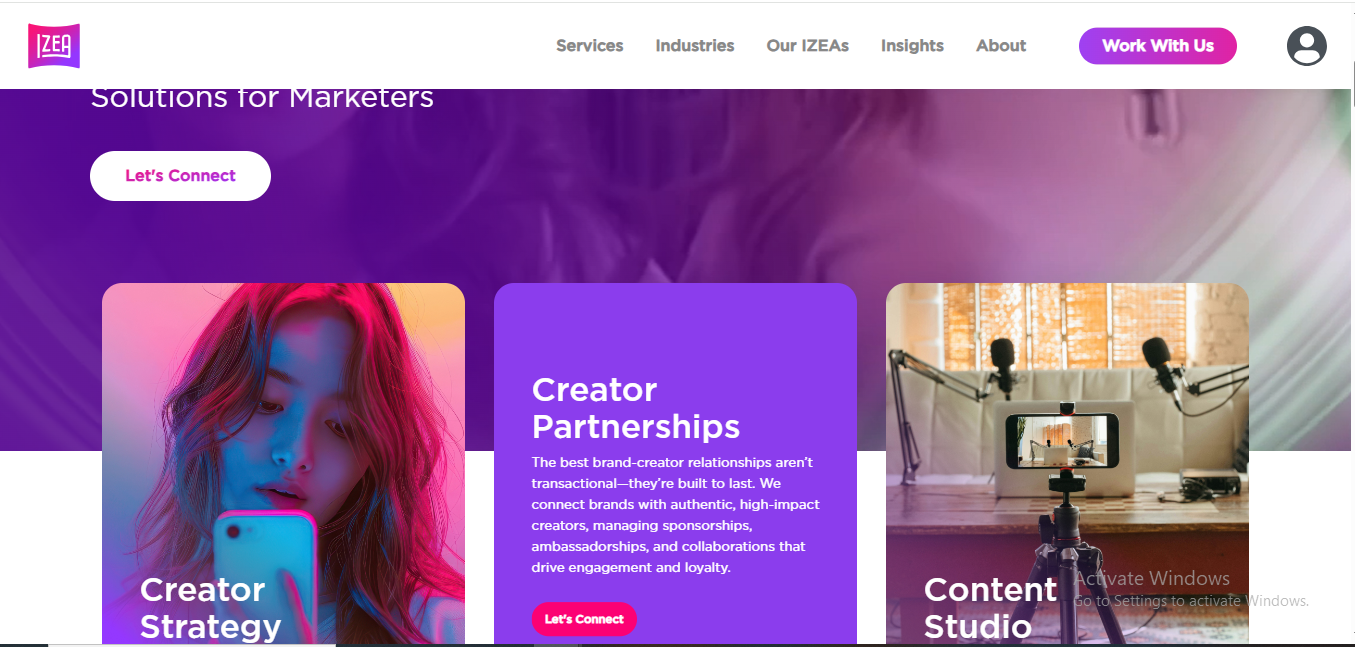
IZEA has been around for a minute, and it’s one of the OGs of the influencer marketing world. But does it still have the juice in 2025? Let’s find out.
What I Loved:
-
Super versatile platform. Whether you’re looking to connect with bloggers, Instagram stars, or YouTubers, IZEA has a massive pool of influencers.
-
Their Marketplace is super easy to use, letting brands browse influencers by category, audience size, and platform.
-
Tons of features to help manage your campaigns—from influencer discovery to content creation and reporting.
What I Didn’t Love:
-
Can be a little pricey for small businesses.
-
Some users report that the influencer selection process can be a bit overwhelming because of the sheer volume of influencers on the platform.
Pricing:
Mid to high-range pricing. It’s worth it if you’re running bigger campaigns, but may not be the best choice for startups on a budget.
Pros:
-
Huge influencer pool.
-
Tons of campaign management tools.
-
Great for both micro and macro influencers.
Cons:
-
A bit overwhelming due to the massive influencer pool.
-
Can get pricey.
16. Insense
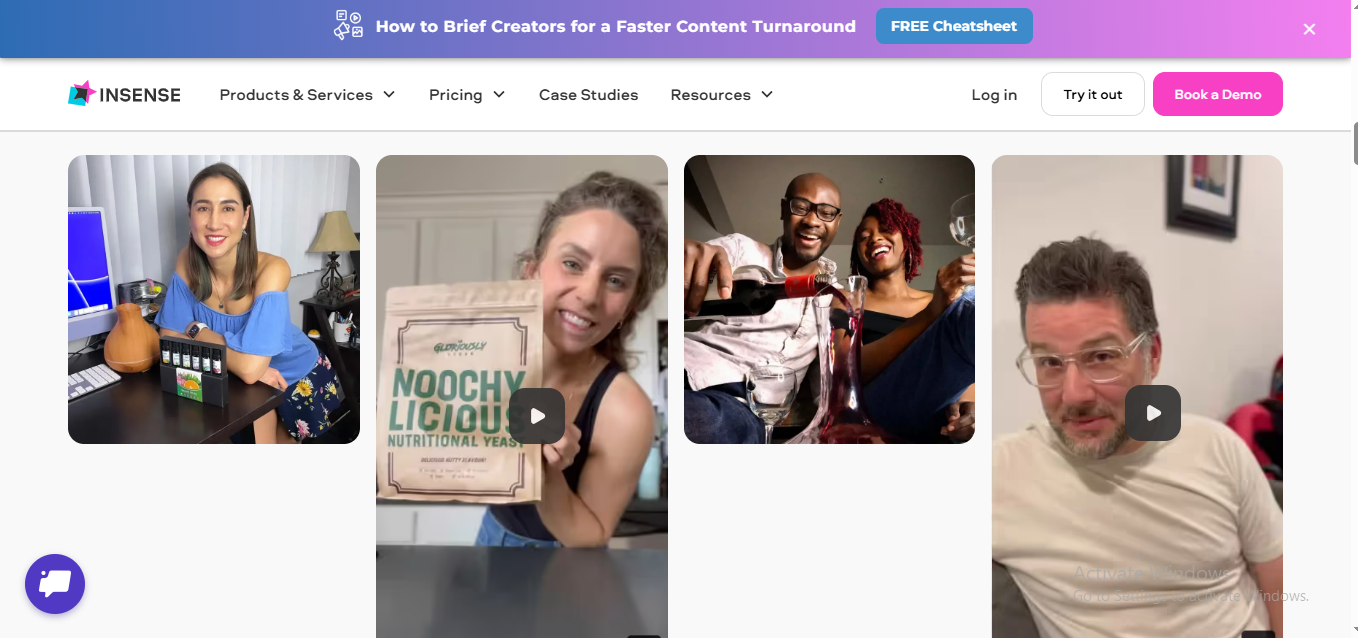
If you want to run high-quality influencer campaigns without the chaos of managing multiple platforms, Insense is where it’s at.
What I Loved:
-
It’s super easy to use. You can launch your campaigns in minutes and get access to some really high-quality influencers.
-
They offer a variety of campaign options, including product seeding and content creation, so you’re not just paying for a one-off post.
-
I love how flexible it is—whether you’re a small business or a large brand, Insense has something for everyone.
What I Didn’t Love:
-
Limited features in terms of advanced analytics. You don’t get the deep insights you might get from a platform like Braze or IZEA.
-
Some influencers may not be as responsive as you’d hope, so you might need to chase them down a bit.
Pricing:
Affordable with flexible pricing tiers, making it a great option for all business sizes.
Pros:
-
User-friendly.
-
Flexible campaign options.
-
Great for a variety of businesses.
Cons:
-
Lacking advanced analytics.
-
Some influencers are slow to respond.
17. Influence.co
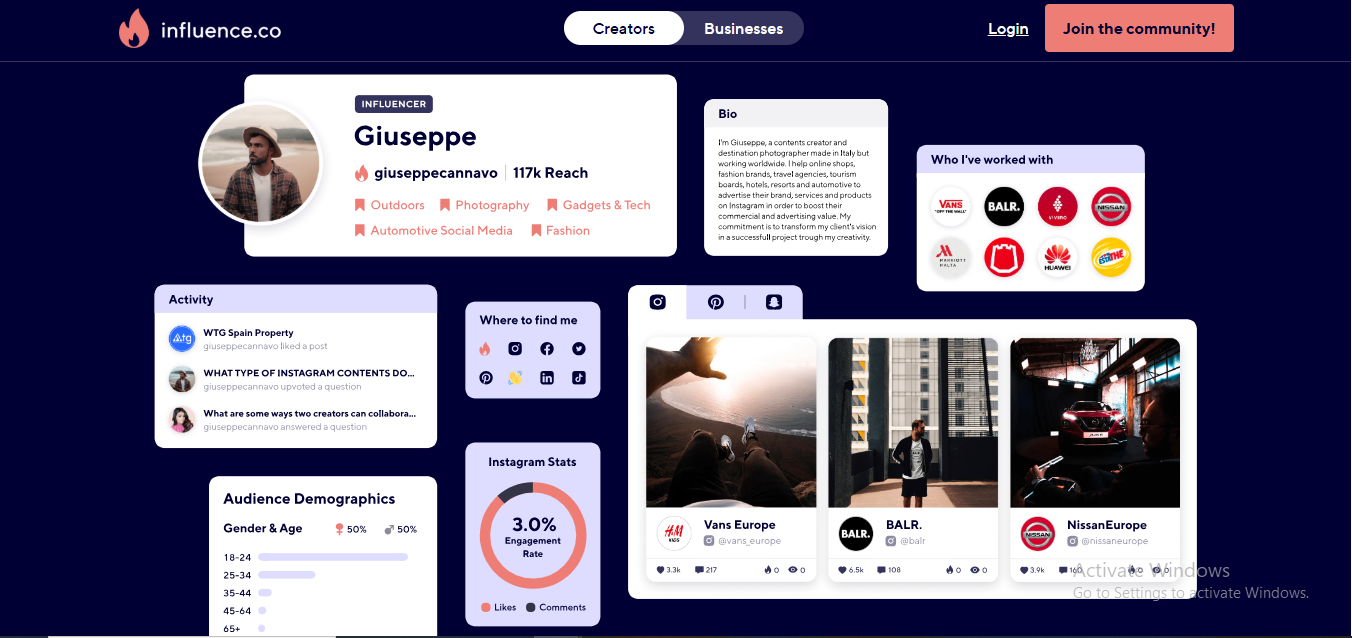
Influence.co is all about building long-term relationships with influencers. It’s a platform designed to help brands not only connect with influencers but create lasting partnerships.
What I Loved:
-
The community aspect is strong here. You can really build long-term relationships with influencers rather than just doing one-off campaigns.
-
The platform is easy to navigate, and the profiles are well-organized. You can find influencers based on specific interests, making it easy to target the right people.
-
Their campaigns are customizable, allowing you to tailor everything to your needs.
What I Didn’t Love:
-
The pricing can be a bit on the higher side if you want to access premium features.
-
Some influencers can be hard to reach, which can slow down your campaign progress.
Pricing:
On the pricier side for premium features, but a solid investment if you want to build meaningful, long-term influencer relationships.
Pros:
-
Strong community and relationship-building.
-
Customizable campaigns.
-
Well-organized influencer profiles.
Cons:
-
Higher pricing.
-
Some influencers hard to reach.
18. Influencer
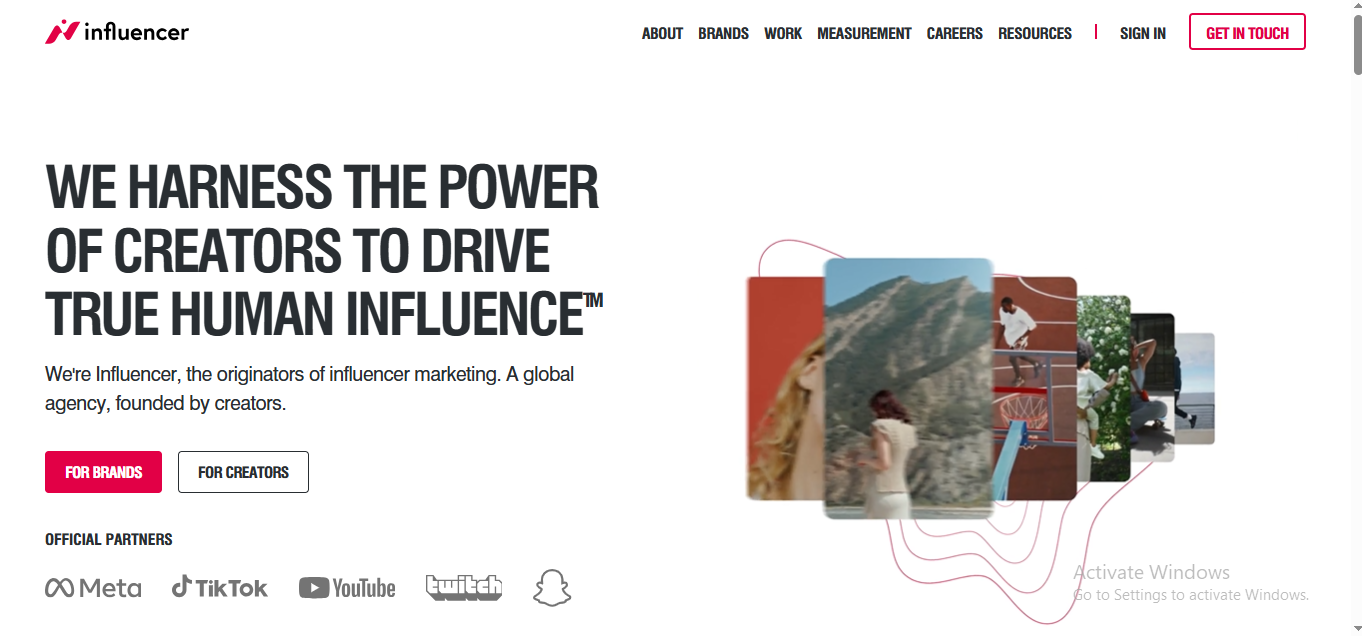
Influencer is all about helping you find the right influencers for your brand, and they’ve got a solid reputation in the industry.
What I Loved:
-
Simple, easy-to-use interface. No need to sift through tons of profiles—just a few clicks, and you’re matched with influencers.
-
They offer detailed reporting and analytics, so you can track the success of your campaigns without breaking a sweat.
-
Good mix of influencers from various industries, which makes it great for brands in different niches.
What I Didn’t Love:
-
The platform can feel a little basic compared to some of the more advanced ones.
-
Limited automation features, so you’ll need to stay hands-on with your campaigns.
Pricing:
Mid-range pricing that’s pretty reasonable for most brands.
Pros:
-
Easy-to-use interface.
-
Great reporting tools.
-
Wide range of influencers across industries.
Cons:
-
Lacks some advanced features.
-
Not much automation.
19. Later
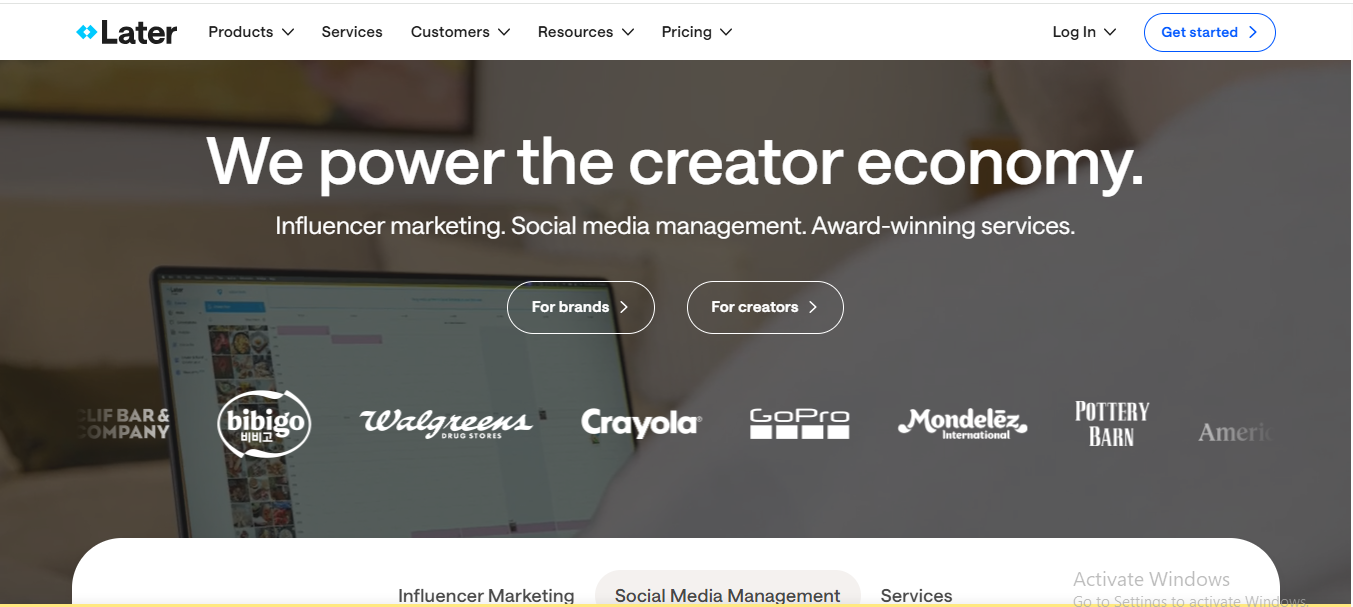
If you’re all about visuals and scheduling your social media like a pro, Later is your go-to.
What I Loved:
-
Later is perfect for scheduling and planning Instagram posts, which is where the influencer magic happens. It’s visual, and that’s key for brands looking to maintain a cohesive feed.
-
The drag-and-drop functionality makes scheduling so easy that even my grandma could do it. Seriously, it’s that simple.
-
It’s great for a holistic view of your content strategy, integrating user-generated content and influencer posts in one spot.
What I Didn’t Love:
-
While Later is awesome for visual planning, it lacks some of the in-depth influencer discovery features that other platforms offer.
-
It’s not as flexible with campaign tracking, so if you’re a data-driven marketer, you may want something with more analytics.
Pricing:
Affordable for most small to mid-sized businesses. They’ve got a free plan, and the paid plans are reasonable, especially if you’re focused on Instagram.
Pros:
-
Super user-friendly.
-
Perfect for planning Instagram content.
-
Easy content calendar.
Cons:
-
Lacks deep influencer discovery.
-
Limited analytics for influencer campaigns.
20. Shout Agency
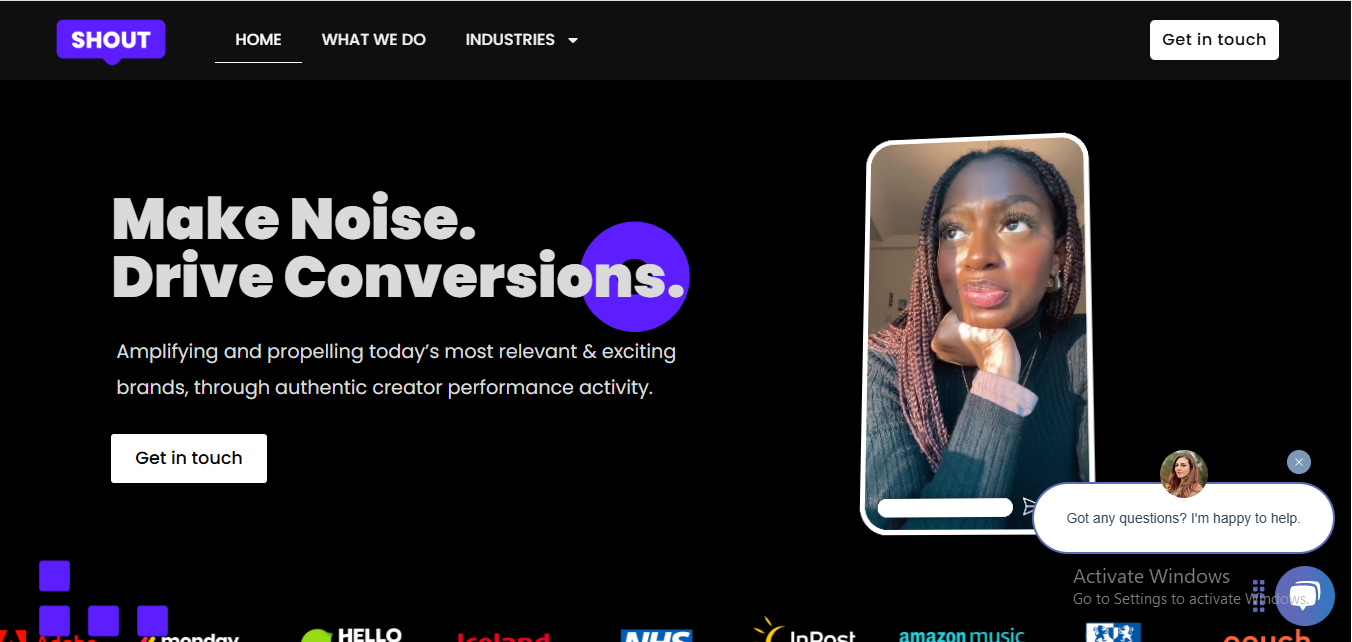
Shout Agency is all about getting your brand heard by the right people, and they focus on creating influencer partnerships that really speak to your audience.
What I Loved:
-
They offer full-service campaigns from start to finish, so you’re not just getting influencers—you’re getting a strategy behind them.
-
Shout Agency has a knack for creative influencer campaigns that really tap into pop culture and current trends. If you want to make a splash, they’ve got the connections to help.
-
They work with a variety of industries, from beauty to tech, so there’s something for everyone.
What I Didn’t Love:
-
The full-service approach means it can get a little pricey. If you’re on a tight budget, this might be more than you need.
-
It’s not as DIY as other platforms—if you like to do everything yourself, you may find the agency approach a bit too hands-on.
Pricing:
Premium pricing for full-service campaigns. It’s more of an investment, but it could be worth it if you need a top-tier, hands-off approach.
Pros:
-
Full-service influencer campaigns.
-
Great at staying on trend.
-
Strong connections across various industries.
Cons:
-
Higher pricing.
-
Not as hands-on for smaller businesses.
21. Klear
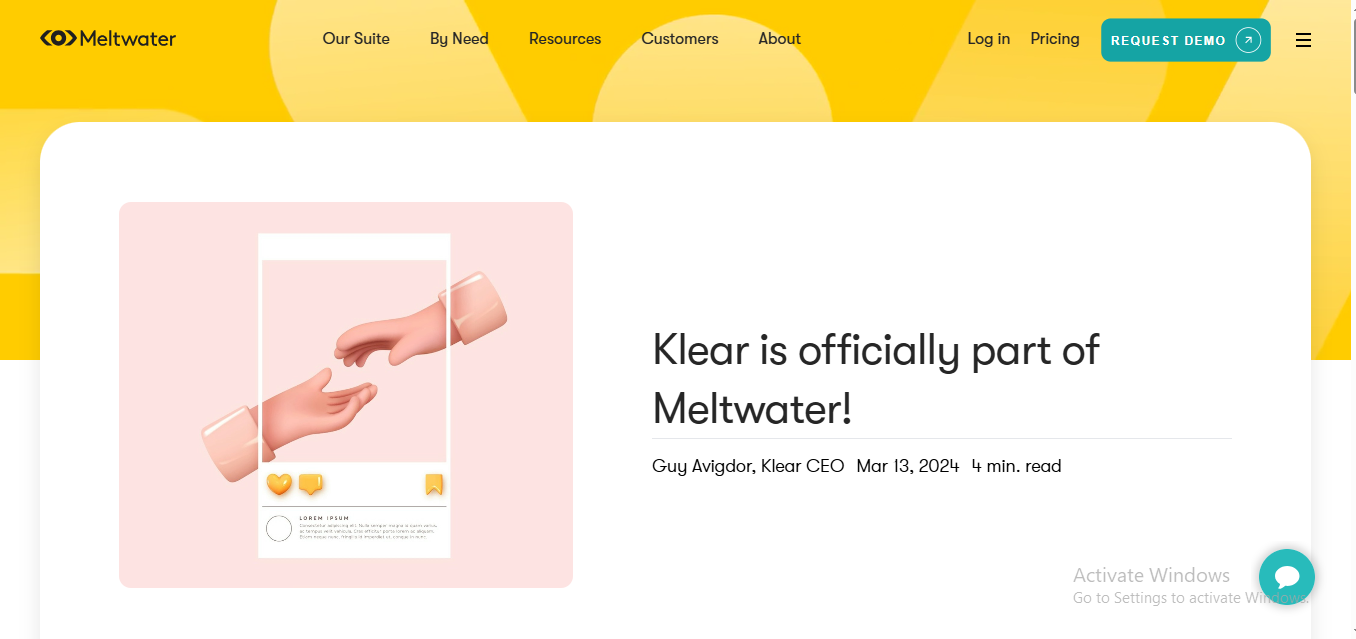
Klear is one of the OG influencer marketing platforms, and it’s still going strong in 2025.
What I Loved:
-
It’s a powerhouse for influencer discovery. You can search by niche, location, and even engagement rates, so finding the right influencer for your brand is super easy.
-
Klear’s analytics are top-notch. You can track everything from engagement to ROI, which is crucial for measuring the success of your campaigns.
-
They have a big roster of influencers across multiple social platforms—Instagram, YouTube, Twitter, and more.
What I Didn’t Love:
-
The platform can feel a little overwhelming at first because there’s so much data and so many features. It’s great for big brands, but smaller teams may find it a bit much.
-
Pricing can be a bit steep for small businesses that are just getting started with influencer marketing.
Pricing:
They offer several pricing tiers, but be prepared to spend a bit more for all the bells and whistles. Definitely more suited for medium to large businesses.
Pros:
-
Excellent influencer search tools.
-
Detailed analytics.
-
Multi-platform support.
Cons:
-
A bit overwhelming for beginners.
-
Higher pricing.
22. Brandbassador
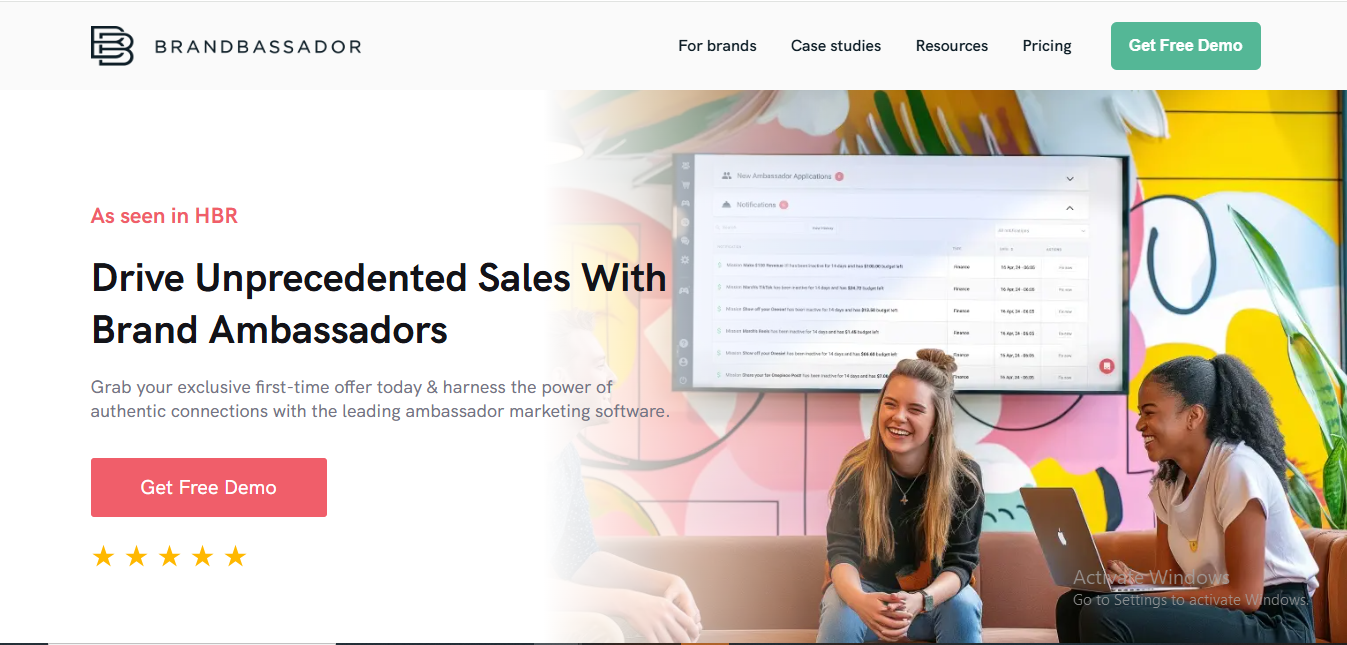
Looking to create an army of brand ambassadors? Brandbassador is the platform you want to check out.
What I Loved:
-
The platform is designed to build lasting relationships with brand ambassadors rather than just one-off influencer posts.
-
You can track your ambassadors’ performance and reward them with incentives, which keeps everyone motivated.
-
It’s great for building community-driven campaigns, especially if you’re in the fashion, beauty, or fitness industry.
What I Didn’t Love:
-
It’s focused more on ambassadors than on influencers, so if you’re looking for traditional influencer campaigns, this might not be your best fit.
-
You’ll need to put in some work to manage and communicate with your ambassadors regularly.
Pricing:
Affordable pricing for brands that are serious about long-term ambassador programs. They offer a free trial to get you started.
Pros:
-
Builds long-term relationships with brand ambassadors.
-
Great for industries like fashion and fitness.
-
Performance tracking and rewards.
Cons:
-
More focused on ambassadors than influencers.
-
Requires ongoing management.
23. Shout UGC
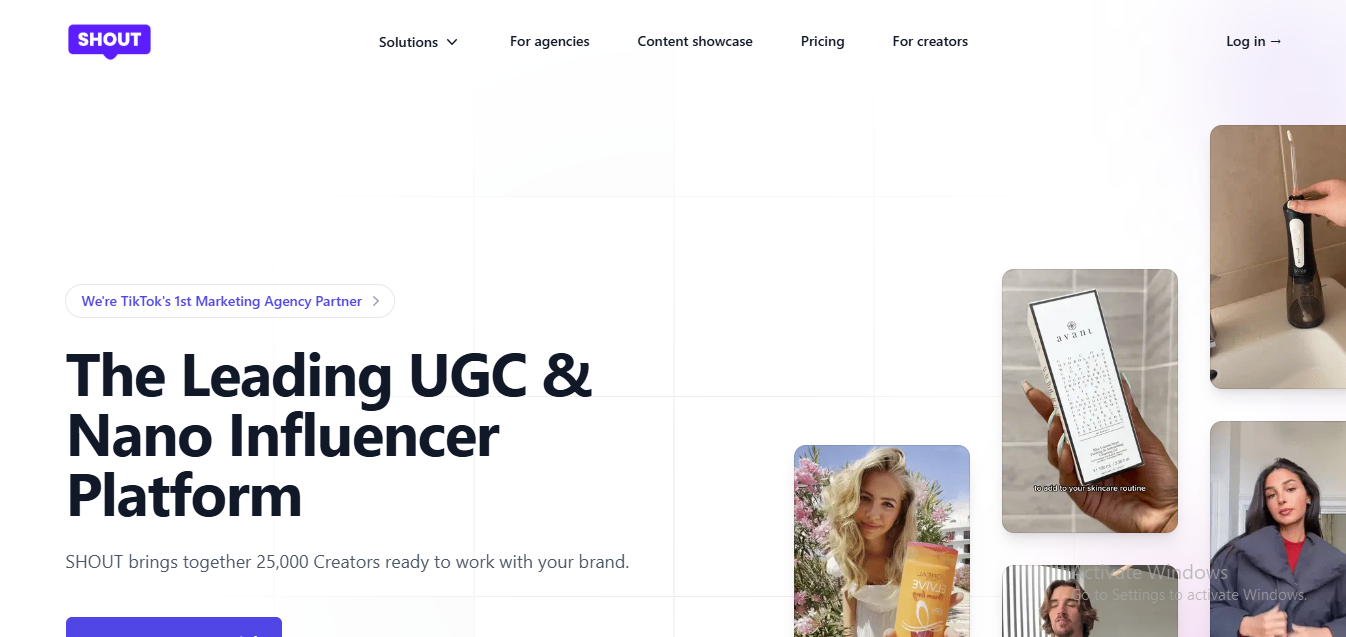
User-generated content is where it’s at, and Shout UGC lets you harness that power with influencers who are ready to create real content for your brand.
What I Loved:
-
It’s a great platform for collecting authentic user-generated content (UGC) from influencers, which can make your campaigns feel more organic and engaging.
-
Shout UGC’s platform allows influencers to create content that you can repurpose across your own channels, making it a great way to build social proof.
-
Their UGC campaigns are super customizable—you can tailor everything to fit your brand’s needs.
What I Didn’t Love:
-
It’s not the best platform for traditional influencer marketing (e.g., sponsored posts). If that’s what you’re looking for, you might find Shout UGC limiting.
-
You’ll need to monitor the content to ensure it aligns with your brand’s voice and aesthetic.
Pricing:
Pricing varies depending on the scale of your campaign. It’s affordable for mid-sized businesses looking to run UGC campaigns.
Pros:
-
Focuses on user-generated content.
-
Customizable campaigns.
-
Perfect for brands looking to build social proof.
Cons:
-
Limited for traditional influencer marketing.
-
Requires content monitoring.
24. CreatorIQ
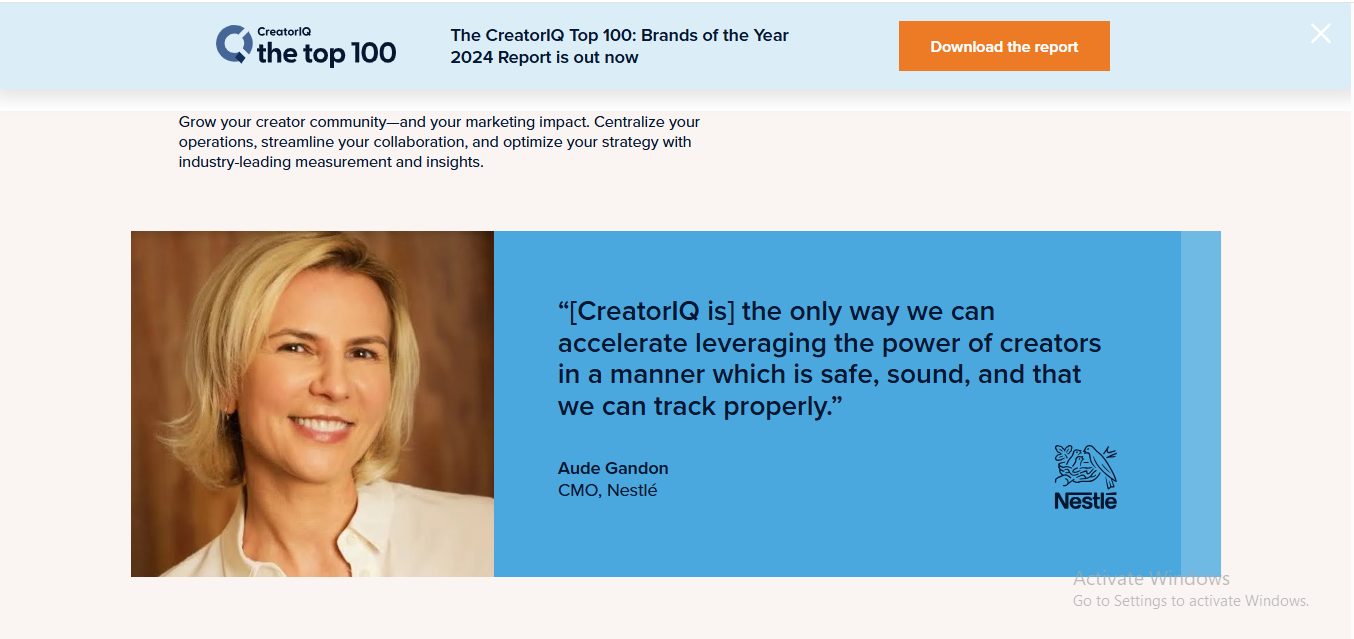
CreatorIQ is the big player for scaling up your influencer campaigns in 2025. If you need something that’s sophisticated and built for enterprise-level businesses, CreatorIQ might be the one for you.
What I Loved:
-
The platform offers a ton of customization, so you can really tailor your campaigns to your brand’s needs.
-
CreatorIQ’s analytics are ridiculously detailed—I’m talking everything from influencer performance to ROI, so you can make data-driven decisions.
-
They also integrate with a lot of other marketing tools, which makes life a whole lot easier if you’re already using a suite of platforms for your campaigns.
What I Didn’t Love:
-
If you’re a smaller business or just starting out, this might be overkill for you. It’s designed for big companies with big budgets.
-
There’s a learning curve to the platform, so be prepared to invest some time into understanding all the features.
Pricing:
Definitely on the expensive side, so this is more for companies with a serious influencer marketing budget.
Pros:
-
Tons of customization.
-
Deep analytics and reporting.
-
Integrates with other marketing tools.
Cons:
-
Overkill for small businesses.
-
Steep learning curve.
25. InfluencerMarketing.ai
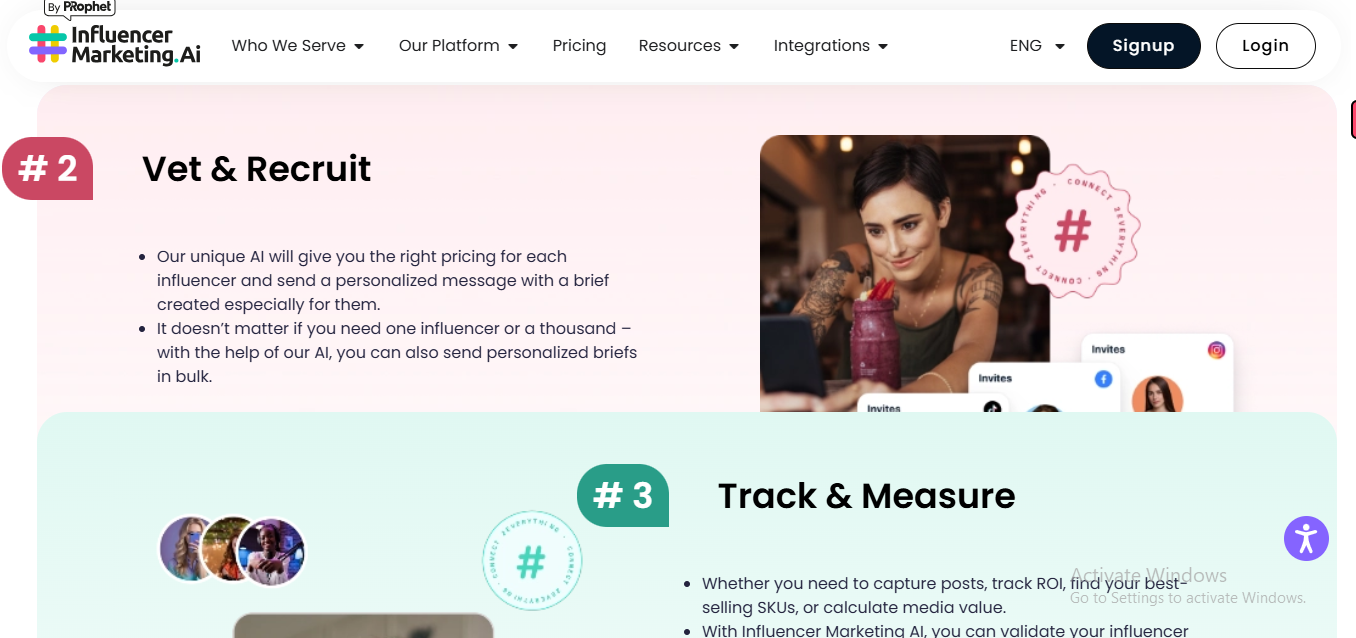
Alright, let’s start with InfluencerMarketing.ai. Sounds fancy, right? Well, it definitely is, and here’s why.
What I Loved:
-
The AI-powered influencer discovery tool is 🔥. You get super accurate results based on your brand’s needs, and it saves SO much time.
-
Real-time performance tracking lets you keep an eye on how your influencers are doing, which is critical for adjusting strategies on the fly.
-
Tons of filters—so whether you need influencers with a specific follower count or engagement rate, InfluencerMarketing.ai has your back.
What I Didn’t Love:
-
It can be a bit too much if you’re not super tech-savvy. I love that it’s powered by AI, but sometimes I felt like I needed a manual to figure out all the features.
-
The pricing is a little steep for small businesses. This one’s more suited for mid-sized to large brands looking for detailed analysis and automation.
Pricing: Definitely on the higher end, so if you’re a small biz with limited resources, this might not be for you. But for larger campaigns, the investment could pay off.
Pros:
-
AI-driven tools.
-
Performance tracking.
-
Detailed influencer filters.
Cons:
-
Can be overwhelming for beginners.
-
Higher pricing.
26. Traackr

Next up is Traackr, a platform that’s been around for a while and is known for its comprehensive influencer relationship management.
What I Loved:
-
It offers deep insights into your influencer relationships, not just their follower count. Traackr helps you understand the true impact of your collaborations.
-
The ability to create long-term partnerships with influencers is 🔑. You can track their performance over time, making it easier to nurture those connections.
-
It’s very much data-driven, so you get detailed reports on how your campaigns are performing—super helpful for optimizing ROI.
What I Didn’t Love:
-
The platform can be a bit on the pricey side, especially if you’re a startup. If you don’t need all the bells and whistles, you might find it overwhelming.
-
It’s not the most intuitive UI. I had to get used to navigating around, and that can be frustrating if you’re pressed for time.
Pricing: Pricing is based on the size of your campaigns and the number of features you need, so expect to pay a bit more for enterprise-level solutions.
Pros:
-
Relationship-focused, not just transactional.
-
Deep reporting and analytics.
-
Great for long-term partnerships.
Cons:
-
Not the cheapest option.
-
Interface takes time to master.
27. Upfluence
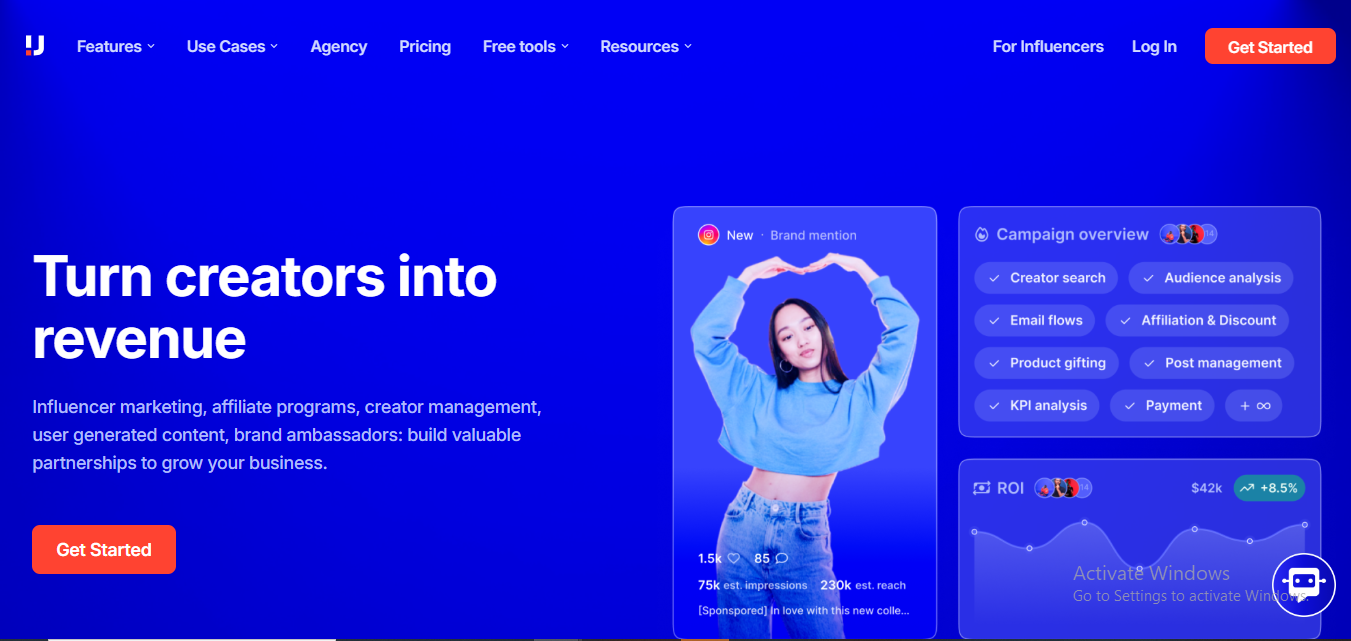
Upfluence is a major player in the influencer marketing space, and it’s easy to see why.
What I Loved:
-
One of the best influencer search tools I’ve used. You can search based on niche, location, engagement rate, and more—super customizable.
-
It integrates well with eCommerce platforms like Shopify, so if you’re looking to run campaigns that convert into sales, this is clutch.
-
Their all-in-one campaign management system means you can handle everything from influencer outreach to payments in one place.
What I Didn’t Love:
-
While the influencer discovery feature is amazing, it’s a bit too “funnel-y.” I found that it’s more geared toward larger-scale campaigns, so smaller businesses might not need all the automation.
-
The pricing is also a bit up there, especially for their advanced features. So, make sure your budget can stretch if you’re after the pro tools.
Pricing: On the pricier side, but you get a lot of features. Great for brands with some serious influencer marketing budgets.
Pros:
-
Powerful influencer search.
-
Great for eCommerce integration.
-
All-in-one platform.
Cons:
-
More suited for larger campaigns.
-
Can get pricey.
28. Meltwater

Meltwater has been a big name in the PR world, and it’s no surprise they’ve ventured into the influencer marketing space.
What I Loved:
-
Meltwater’s social listening tools are. They let you see what influencers are saying about your brand (or competitors) in real-time.
-
I loved the built-in media monitoring features. You get a full view of how your influencers are performing across different channels.
-
It’s great for tracking not just influencers, but the general conversation about your brand. Super helpful for adjusting messaging.
What I Didn’t Love:
-
It’s definitely designed for more traditional brands with larger marketing teams. If you’re a small biz, the interface and tools might feel like overkill.
-
The price point is pretty high, especially if you’re not looking for full-service PR tools.
Pricing: Meltwater offers custom pricing based on your needs, so it’s definitely for brands with some bigger budgets.
Pros:
-
Awesome social listening tools.
-
Good for comprehensive media monitoring.
-
Great for large teams and PR-focused campaigns.
Cons:
-
Not ideal for small businesses.
-
A bit pricey if you don’t need full-service PR.
29. The Social Cat

The Social Cat is a newer platform that’s been gaining some traction. It’s designed to connect brands with influencers for user-generated content (UGC).
What I Loved:
-
It’s super easy to use, and setting up campaigns is a breeze. You can quickly get your influencers creating content for your brand.
-
Great for UGC-focused campaigns, so if you’re looking to build authentic content, this is the platform for you.
-
It’s affordable, which is always a win when you’re on a budget.
What I Didn’t Love:
-
If you’re after big-name influencers, this might not be the platform for you. It’s more focused on micro-influencers and UGC creators.
-
The platform could use a bit more advanced tracking tools to measure campaign performance.
Pricing: Affordable for small to mid-sized businesses. It’s definitely budget-friendly compared to the big players.
Pros:
-
Easy to use.
-
Great for UGC.
-
Affordable pricing.
Cons:
-
Limited influencer pool for larger campaigns.
-
Needs more advanced reporting tools.
Final Thoughts
Choosing the best influencer marketing platform really depends on your goals, budget, and needs. If you’re a small brand just starting out, Hashtag Paid and Lolly are perfect for dipping your toes in. On the other hand, if you’re an e-commerce brand, Grin and Mavrck are the big players you’ll want to check out.
Each platform has its own unique strengths, and no single platform is perfect for everyone. Hopefully, this list helps you find the right fit for your influencer marketing strategy!
- Best Datanyze Alternatives for 2025 - April 24, 2025
- Best Hunter.io Alternatives for 2025 - April 22, 2025
- Best Lead411 Alternatives for 2025 - April 22, 2025

